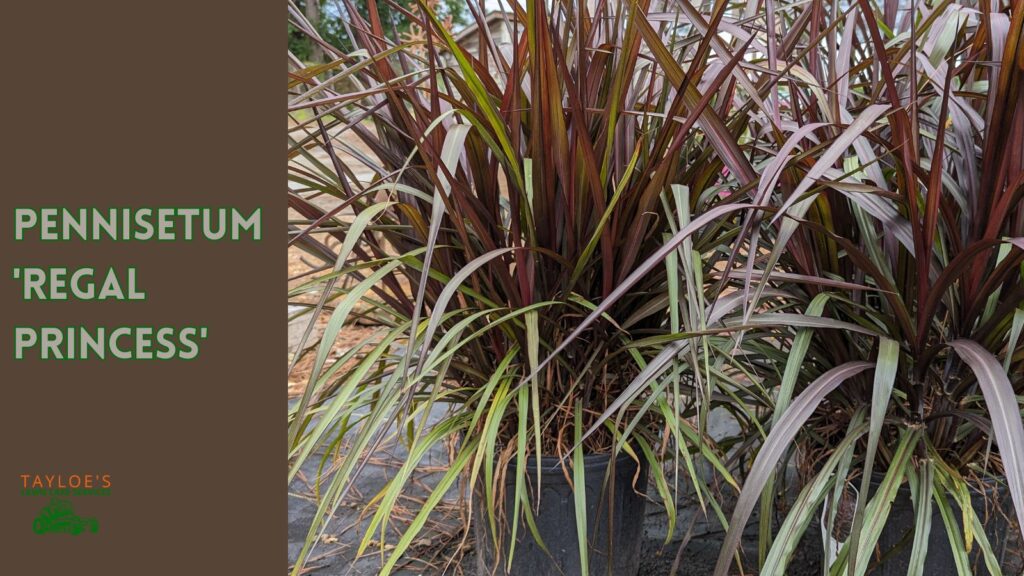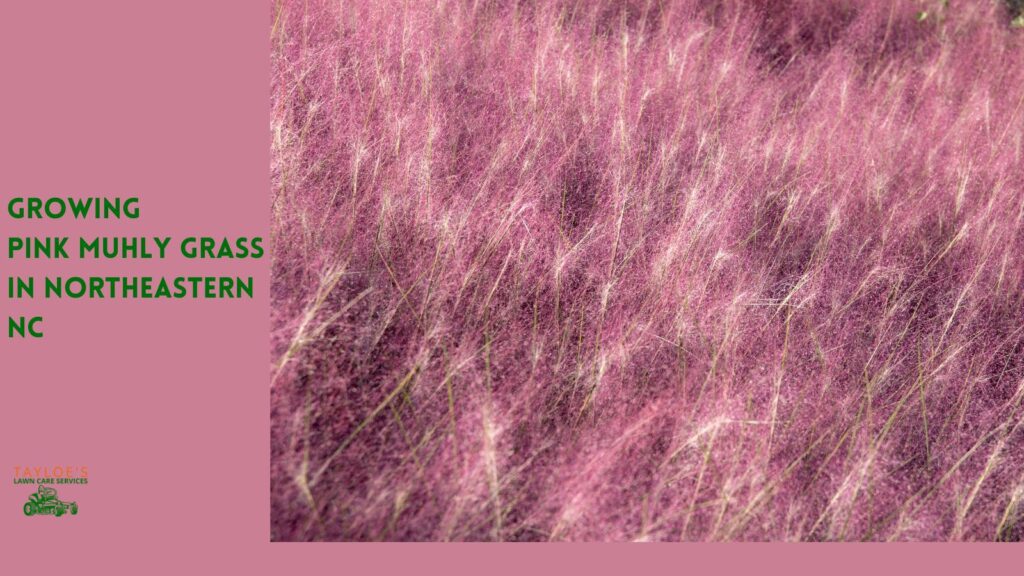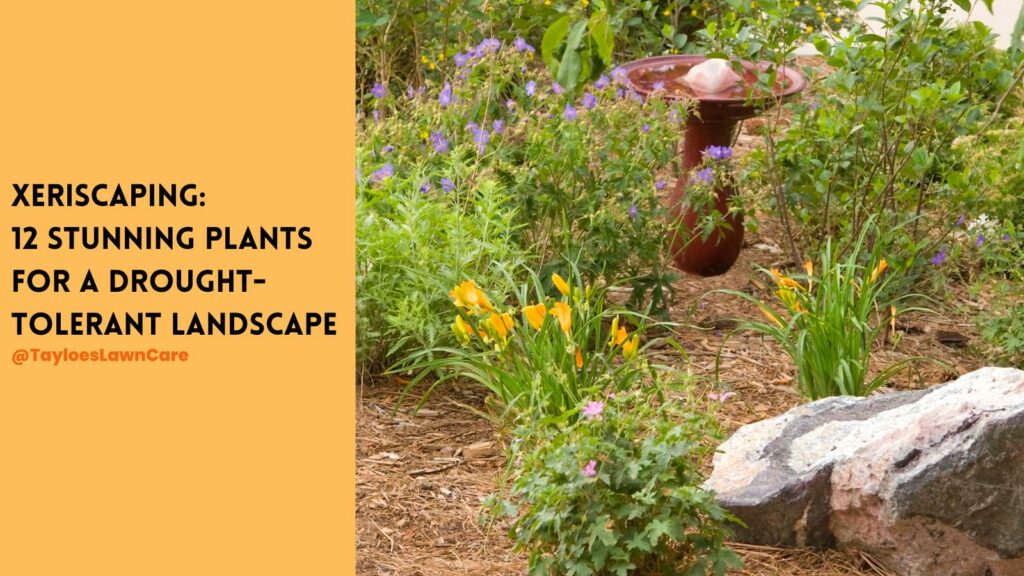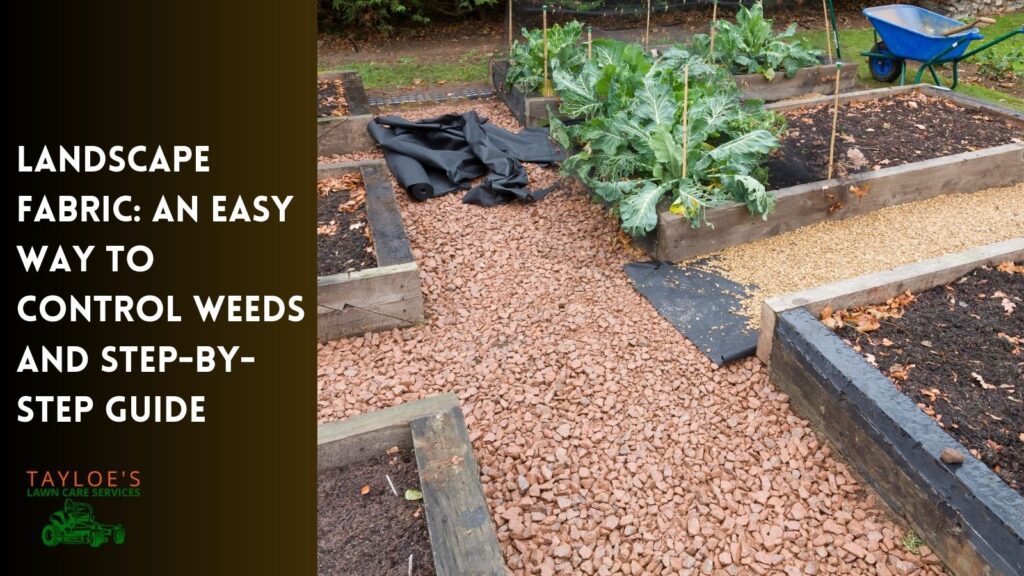Last Updated on: 1st June 2024, 11:51 am
From small to tall, there’s an ornamental grass for your landscape!
Choosing the best ornamental grasses for your landscape can significantly enhance the beauty and functionality of your outdoor space. It’s essential to consider the climate, soil, and growing conditions of northeastern North Carolina, USDA zones 7 and 8, to ensure a thriving and vibrant garden.
USDA zones 7 and 8 in northeastern North Carolina have moderate winters and warm summers. Zone 7 has average minimum winter temperatures between 0°F to 10°F, while zone 8 has slightly milder temperatures between 10°F to 20°F. The region experiences humid and hot summers and adequate yearly precipitation–the perfect setting for these ornamental grass offerings.
Five Fantastic Ornamental Grasses for Zones 7 and 8 of North Carolina
Here are some species that will thrive in our region.
Maiden Grass (Miscanthus sinensis)
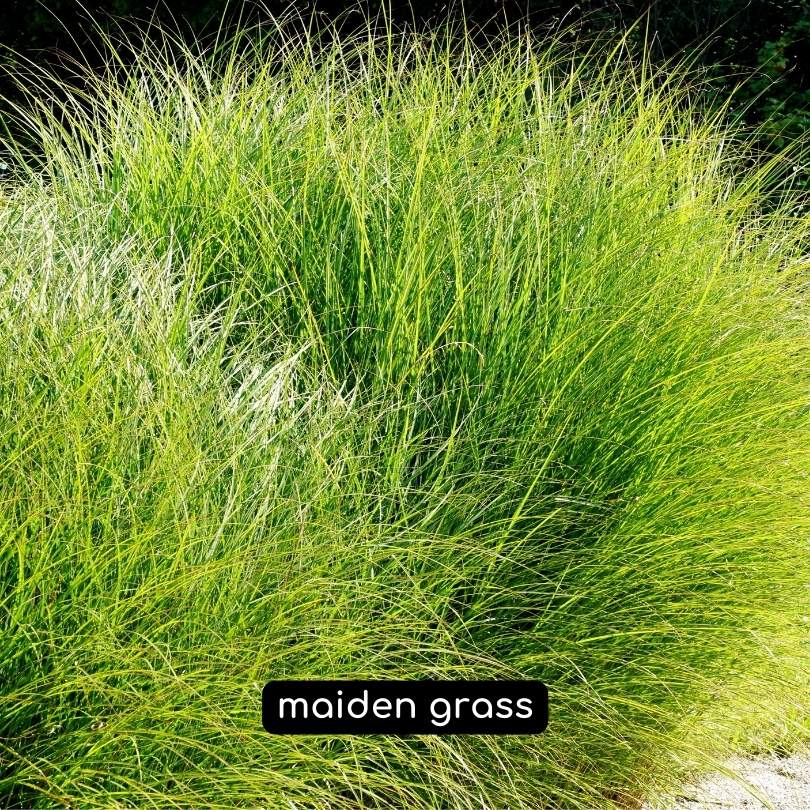
Maiden Grass, or Miscanthus sinensis, is a popular ornamental grass known for its graceful arching habit and feathery, silver-white plumes. This grass can grow up to 6-8 feet tall and adds a stunning vertical element to your landscape. The green-to-silver-gray foliage provides visual interest throughout the year and turns a beautiful golden hue in the fall.
Maiden grass care requirements:
Maiden Grass prefers well-draining soil and full sun to partial shade. Water the plant regularly during the first growing season to establish a robust root system. Once established, Maiden Grass is drought-tolerant and requires little maintenance. Prune the grass back to a few inches above the ground in late winter or early spring to promote fresh growth.
Design and pairing ideas:
Use Maiden Grass as a focal point in your landscape, in mixed borders, or to create a privacy screen. Pair it with perennials such as black-eyed Susans, coneflowers, or Russian sage for an attractive, low-maintenance garden display.
Fountain Grass (Pennisetum alopecuroides)
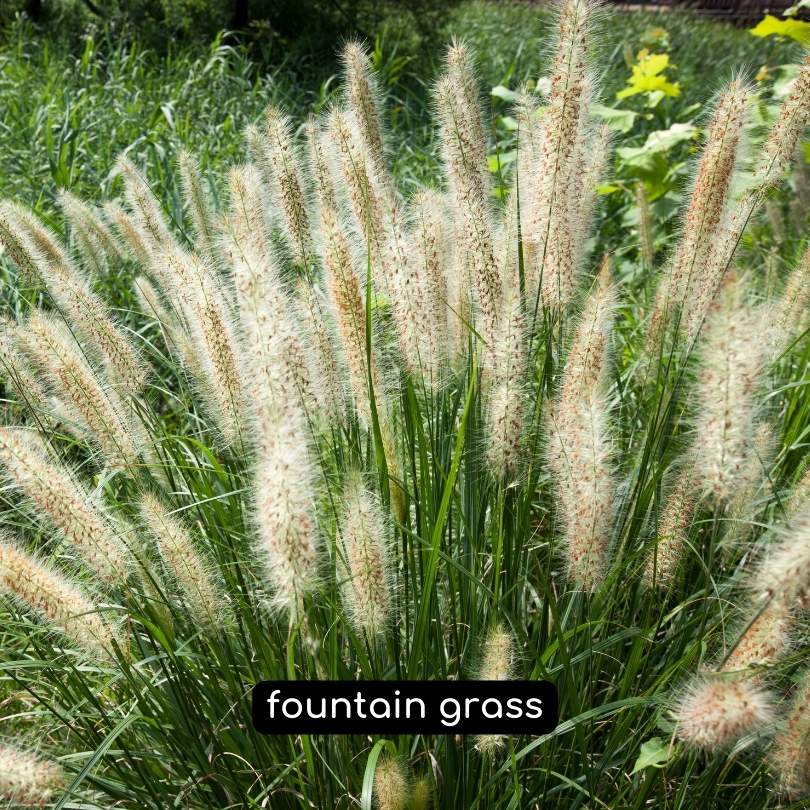
Fountain Grass, or Pennisetum alopecuroides, is a versatile ornamental grass that forms dense, rounded clumps of gracefully arching foliage. It grows 2-4 feet tall and produces showy, bottlebrush-like flower spikes that emerge in late summer and persist into the winter months. The green-to-blue-green foliage turns shades of gold, orange, or red in the fall, adding seasonal interest.
Another option variety is purple fountain grass – a plum-toned grass with dusty pink plumage.
Fountain grass care requirements:
Fountain Grass thrives in well-draining soil and full sun to light shade. Water the plant regularly during the first growing season, but once established, this grass is drought-tolerant and requires minimal maintenance. Prune the grass back to a few inches above the ground in late winter or early spring to promote new growth.
Design and pairing ideas:
Plant Fountain Grass in mass for a stunning visual effect, use it as an accent plant or incorporate it into mixed borders. Pair it with late-summer and fall-blooming perennials, such as asters, sedums, or goldenrods, to create a dynamic, multi-seasonal display.
Blue Fescue (Festuca glauca)
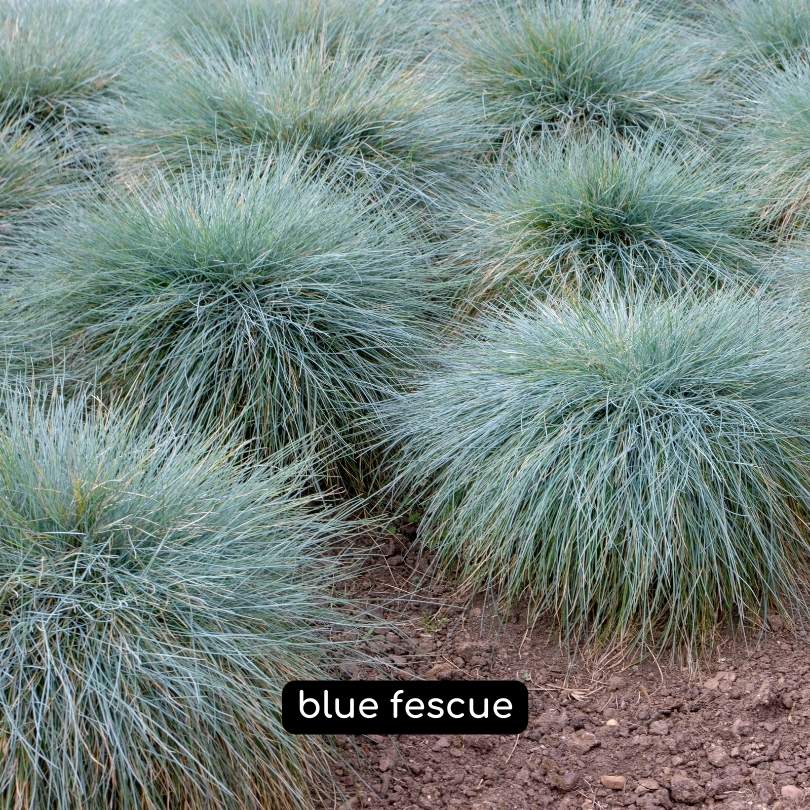
Blue Fescue, or Festuca glauca, is a compact, clump-forming ornamental grass with striking blue-gray foliage. Growing 6-12 inches tall, this low-growing grass is ideal for edging, rock gardens, or as a ground cover. In late spring to early summer, Blue Fescue produces slight, tan, to light green flower spikes that add subtle texture to the landscape.
Blue fescue care requirements:
Blue Fescue thrives in well-draining soil and full sun but can tolerate light shade. It is drought-tolerant once established and requires minimal maintenance. Remove any dead or brown foliage as needed to keep the plant looking its best, and divide the clumps every few years to maintain vigor.
Design and pairing ideas:
Plant Blue Fescue in groups or as a border for a stunning blue-gray accent in your landscape. Pair it with contrasting foliage or flowering plants, such as lavender, yarrow, or coral bells for a visually appealing combination.
Switchgrass (Panicum virgatum)
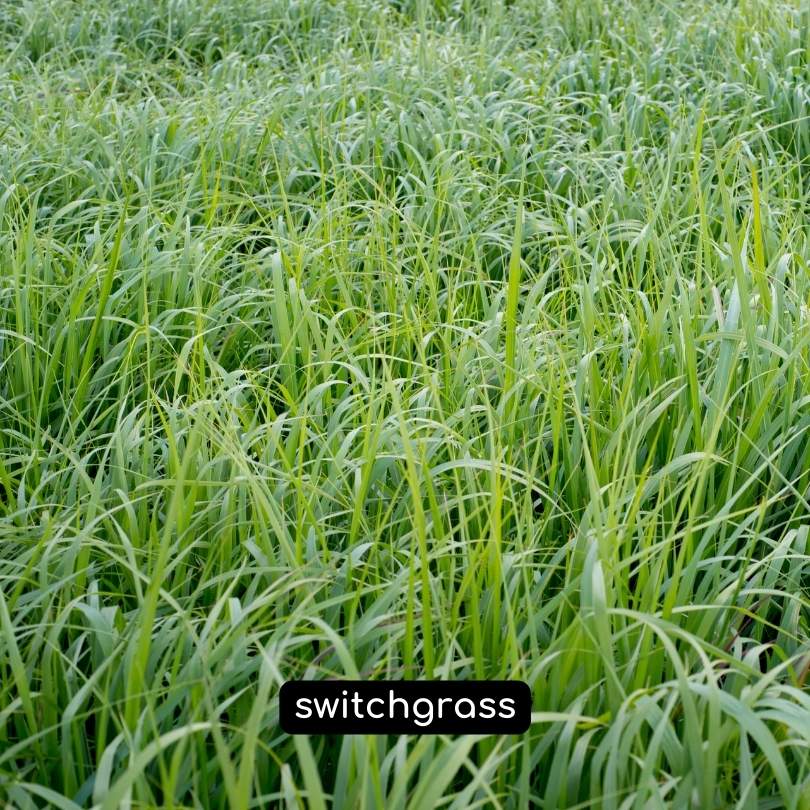
Switchgrass, or Panicum virgatum, is a native North American grass known for its upright, clump-forming habit and airy, open panicles of tiny flowers. It grows 4-6 feet tall and features blue-green to deep green foliage that turns golden-yellow to orange-red in the fall. This hardy grass is an excellent choice for naturalistic landscapes and meadow gardens.
Switchgrass care requirements:
Switchgrass is adaptable to most soil types and prefers full sun to light shade. It is drought-tolerant once established and requires little maintenance. Prune the grass back to a few inches above the ground in late winter or early spring to promote fresh growth.
Design and pairing ideas:
Use Switchgrass in mass plantings, meadow gardens, or as a tall backdrop for perennial borders. Pair it with native wildflowers like milkweed, bee balm, or blazing star to create a vibrant, wildlife-friendly garden.
Purple Muhly Grass (Muhlenbergia capillaris)

Purple Muhly Grass, or Muhlenbergia capillaris, is a show-stopping ornamental grass known for its billowy, pink to purple plumes that appear in late summer and last through the fall. This grass grows 2-3 feet tall and has fine-textured, blue-green foliage that adds a delicate, wispy effect to your landscape.
Purple muhly grass care requirements:
Purple Muhly Grass prefers well-draining soil and full sun. Water the plant regularly during the first growing season to establish a robust root system. Once established, it is drought-tolerant and requires minimal maintenance. Prune the grass back to a few inches above the ground in late winter or early spring to promote new growth
Design and pairing ideas:
Plant Purple Muhly Grass as a specimen plant, in mass for a dramatic effect, or in mixed borders for a burst of late-season color. Pair it with plants with contrasting foliage or complementary colors, such as blue salvias, ornamental kale, or black-eyed Susans, for a visually stunning display.
Tips for Successfully Growing Ornamental Grasses
- Proper soil preparation. Before planting, prepare the soil by adding organic matter, such as compost or well-rotted manure, to improve drainage and provide nutrients for your ornamental grasses.
- Watering and irrigation. Water your ornamental grasses regularly during the first growing season to help establish a healthy root system. Once established, most ornamental grasses are drought-tolerant and require less frequent watering.
- Fertilization. Ornamental grasses generally require little fertilization. However, applying a balanced, slow-release fertilizer in the spring can help promote healthy growth.
Pruning and maintenance of ornamental grasses
Prune your ornamental grasses back to a few inches above the ground in late winter or early spring to encourage fresh growth. Remove any dead or brown foliage to keep the plants looking their best.
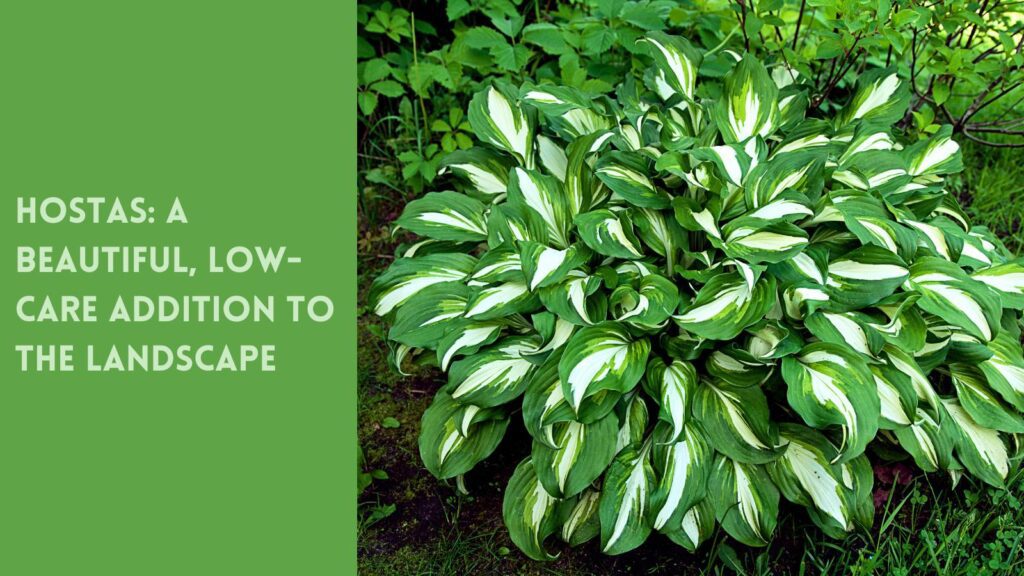
Benefits of Incorporating Ornamental Grasses in Your Landscape
Here are some excellent reasons to work ornamental grass into your landscape plan.
Aesthetic appeal
Ornamental grasses offer a unique combination of color, texture, and movement to your landscape, providing visual interest throughout the year. With a wide range of heights, forms, and colors, you can easily find the perfect grass to suit your design aesthetic.
Low-maintenance nature
Once established, most ornamental grasses require minimal care, making them an excellent choice for busy homeowners or those looking to create a low-maintenance landscape.
An attraction for local wildlife
Many ornamental grasses are native to North America and provide valuable habitat for local wildlife. Their seeds serve as a food source for birds, and their dense foliage offers shelter for small mammals and insects.
Environmental benefits
Ornamental grasses can help to prevent soil erosion, improve water infiltration, and even act as natural air filters by trapping dust and other airborne particles.
Prevention of soil compaction
Ornamental grasses can help prevent soil compaction by promoting a healthy root system that penetrates and loosens the soil. A well-aerated soil allows for better water infiltration, improved root growth, and healthier plant development. Including ornamental grasses in your landscape can contribute to maintaining soil structure and enhancing the health of your garden.


The Takeaway: Ornamental Grasses Demand Little Care But Add Much Beauty to the Landscape Design
Incorporating ornamental grasses into your landscape can enhance the beauty and functionality of your outdoor space. With so many attractive and hardy options available for zones 7 and 8, you can create a stunning, low-maintenance garden that thrives in northeastern North Carolina’s unique climate. Don’t hesitate to experiment and personalize your landscape, and if you need professional assistance or guidance, our company is here to help.
If you enjoyed learning about the best ornamental grasses to add color and texture to your landscape, we’d be delighted to help you create the lawn of your dreams. Connect with Tayloe’s Lawn Care Services can help with grass cutting and trimming, exterior pressure washing, yard clean-ups, and more. We provide lawn care near Ahoskie, Windsor, Aulander, and all of Bertie County. Connect with us today!
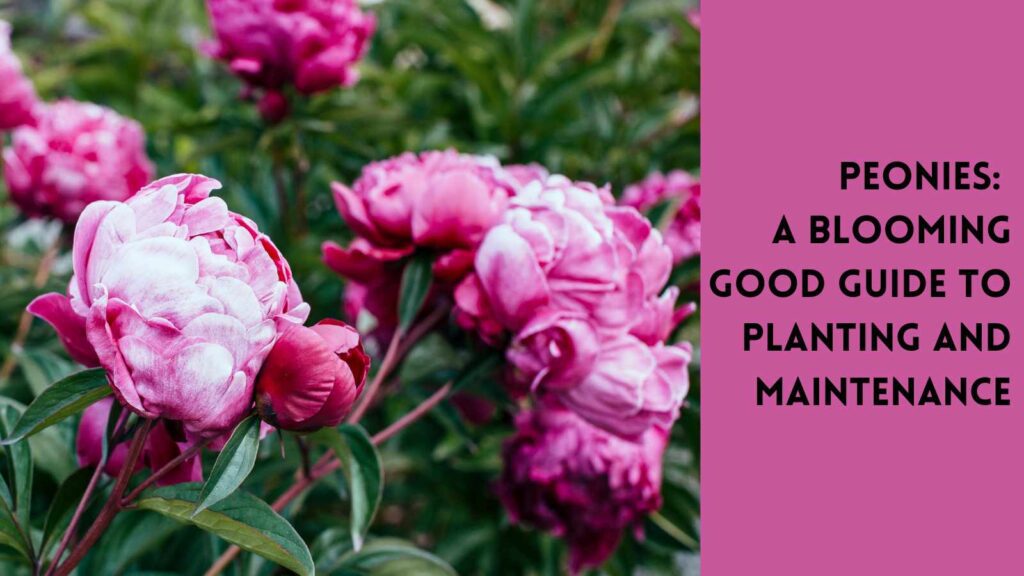
Author Profile

- Deborah Tayloe is the CEO and co-founder of Tayloe's Lawn Care Services, LLC. She has a B.S.Ed and holds certificates in soil and water management and herbology from accredited programs.
Latest entries
 GardeningSeptember 27, 2025What perennials, shrubs, and trees don’t like fall pruning (and why)?
GardeningSeptember 27, 2025What perennials, shrubs, and trees don’t like fall pruning (and why)? Trees and ShrubsSeptember 14, 2025Fall Shrub Pruning Guide (September–October)
Trees and ShrubsSeptember 14, 2025Fall Shrub Pruning Guide (September–October) Trees and ShrubsApril 22, 2025Boxwood Blight: Early identification and isolation
Trees and ShrubsApril 22, 2025Boxwood Blight: Early identification and isolation Flower GardenApril 8, 2025John F. Kennedy Rose: Hybrid tea rose with elegant white blooms
Flower GardenApril 8, 2025John F. Kennedy Rose: Hybrid tea rose with elegant white blooms

